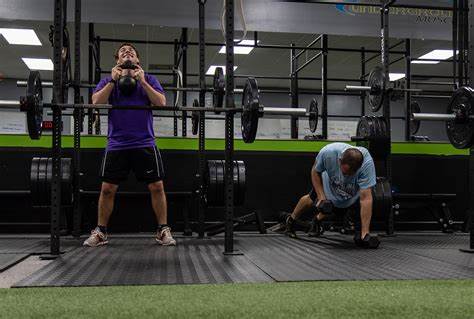Health
How do you train your chest after a pec tear?

Recovering from a torn pectoral muscle can be challenging, but with patience, dedication, and the right approach, you can navigate the journey effectively with https://zoppler.com/help-to-navigate-the-journey-of-torn-pec-muscle-recovery/. Here are some steps to help you through the recovery process:
- Consult a Healthcare Professional: First and foremost, consult a healthcare professional, preferably a sports medicine physician or a physical therapist, to assess the severity of your injury and to develop a personalized recovery plan.
- Rest and Protect: Initially, you’ll need to rest the injured muscle to allow it to heal properly. Avoid activities that exacerbate the pain and limit movements that involve the pectoral muscles. Consider using supportive measures such as slings or braces to protect the muscle during the initial healing phase.
- Ice and Compression: Applying ice packs to the injured area can help reduce pain and inflammation. Be sure to wrap the ice pack in a thin towel to prevent direct contact with the skin and apply it for about 15-20 minutes several times a day. Compression with an elastic bandage can also aid in reducing swelling.
- Pain Management: Over-the-counter pain relievers like ibuprofen or acetaminophen can help alleviate pain and discomfort. However, always follow the recommended dosage and consult with a healthcare professional if the pain persists or worsens.
- Physical Therapy: As you progress in your recovery, your healthcare provider may recommend physical therapy exercises to strengthen the muscles surrounding the injured area, improve flexibility, and restore range of motion. These exercises may include gentle stretches, resistance training, and functional movements tailored to your specific needs.
- Gradual Return to Activity: Once your healthcare provider gives you the green light, gradually reintroduce physical activity and sports into your routine. Start with low-impact exercises and gradually increase the intensity and duration as your strength and flexibility improve. Listen to your body and avoid pushing yourself too hard too soon to prevent re-injury.
- Nutrition and Hydration: Proper nutrition and hydration play a crucial role in supporting muscle recovery. Ensure you’re consuming a balanced diet rich in protein, vitamins, and minerals to support tissue repair and regeneration. Stay hydrated by drinking plenty of water throughout the day.
- Monitor Progress and Adjust: Keep track of your progress and communicate regularly with your healthcare provider. If you experience any setbacks or new symptoms during the recovery process, don’t hesitate to seek medical attention.
- Patience and Persistence: Recovery from a torn pectoral muscle takes time, so be patient with yourself and trust the process. Stay committed to your rehabilitation program, follow your healthcare provider’s recommendations, and don’t get discouraged by setbacks along the way.
- Prevention: Once you’ve recovered, take steps to prevent future injuries by maintaining good posture, using proper lifting techniques, warming up before exercise, and gradually increasing the intensity of your workouts.
Remember, every individual’s recovery journey is unique, so it’s essential to work closely with your healthcare provider to develop a customized plan that meets your specific needs and goals.
-
Blog1 year ago
MyCSULB: Login to CSULB Student and Employee Portal – MyCSULB 2023
-
Android App3 years ago
Cqatest App What is It
-
Android1 year ago
What Is content://com.android.browser.home/ All About in 2023? Set Up content com android browser home
-
Software2 years ago
A Guide For Better Cybersecurity & Data Protection For Your Devices
-
Latest News2 years ago
Soap2day Similar Sites And Alternatives To Watch Free Movies
-
Android2 years ago
What is OMACP And How To Remove It? Easy Guide OMACP 2022
-
Android3 years ago
What is org.codeaurora.snapcam?
-
Business2 years ago
Know Your Business (KYB) Process – Critical Component For Partnerships





















